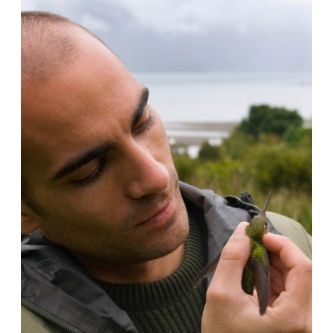
Latest publications
- 2023 Proceedings of the Royal Society B 290: 20230140 Increased male-induced harm in response to female-limited selection: interactive effects between intra- and interlocus sexual conflict?
- 2022 Springer ISBN: 978-3-030-96341-5 Chapter 2: Advances in research on physiology and evolutionary biology: the red-legged partridge as a study model. In: The Future of the Red-legged Partridge: Science, Hunting and Conservation. Editores: Casas, F., García, J. T. Serie: Wildlife Research M
- 2022 Journal of Arid Environments 206: 104844 Dietary ecology of two migrant flycatchers in habitats with and without cattle during the breeding season in central Argentina
- 2022 Physiological and Biochemical Zoology 95: 1-14 Intergenerational costs of oxidative stress: reduced fitness in daughters of mothers that experienced high levels of oxidative damage during reproduction
- 2022 Ibis 164: 298–303 Cosmetic plumage coloration by iron oxides does not confer protection against feather wear
- 2022 Oecologia 199: 79-90 Sexual differences in phenotypical predictors of floating status: body condition influences male but not female reproductive status in a wild passerine
- 2022 Journal of Avian Biology: e02913 Experimentally impaired female condition does not affect biliverdin-based egg colour
- 2021 Ornitología Colombiana 20: 13-25 Biometría, condición corporal, estado reproductivo y muda de Tyrannus s. savana en el centro de Argentina
- 2021 European Journal of Wildlife Research 67:68. Influence of growing up in the city or near an airport on the physiological stress of tree sparrow nestlings (Passer montanus)
- 2021 Behavioral Ecology and Sociobiology 75: 52 Prenatal manipulation of yolk androgen levels does not affect egg coloration or size in a songbird.
Lorenzo Pérez Rodríguez
Lecturer (IREC, UCLM)
Research Themes
My research can be framed in the interface between behavioural ecology and ecophysiology. I am particularly interested in the physiological mechanisms mediating individual trade-offs and processes in an evolutionary context. In other words, my research is aimed at explaining the evolutionary processes (ultimate causes) that shape individual phenotypes and behaviours by focusing on the key mechanisms (proximate causes) that underlie these traits. In this context, I am particularly interested in the physiological pathways regulating the honesty of social signals.
Taking birds as models, my work is focused in the study of coloured traits as a signals of individual quality, paying special attention to carotenoid-based traits (what determines their expression? what is their relationship with the immune and antioxidant system? do carotenoid pigments play a significant role as antioxidants?). More recently, I have started exploring the informative content of complex visual patterns. Also, in the framework of individual trade-offs, my research is focused in the role of oxidative stress in life history traits (what factors –both internal and external- increase oxidative stress? How does oxidative stress impact individual fitness?), studying these effects from early development to adulthood.
Curriculum Vitae
I received my first degree in Biology in the University of Córdoba, where I was awarded with the Special Price for the Best Academic Qualifications (year 2002). In 2003 I joined the Instituto de Investigación en Recursos Cinegéticos (IREC), a research institute belonging to the Spanish Research Council (CSIC) and the University of Castilla-La Mancha (UCLM) thanks to a predoctopral grant. In 2007 I finished my PhD, which was awarded with the Special Price for the Best PhD in Experimental and Health Sciences in the UCLM. After that I enjoyed different postdoc contracts at the University of Aberdeen (UK) (2007-2009), Museo Nacional de Ciencias Naturales (MNCN-CSIC) in Madrid (2009-2012), Centro de Investigação em Biodiversidade e Recursos Genéticos (CIBIO) in Portugal (2013), Estación Biológica de Doñana (EBD-CSIC) in Seville (2013-2017) and IREC (2017-2021). Since 2021 I am Lecturer at the University of Castilla -La Mancha at the IREC, Ciudad Real (Spain).



